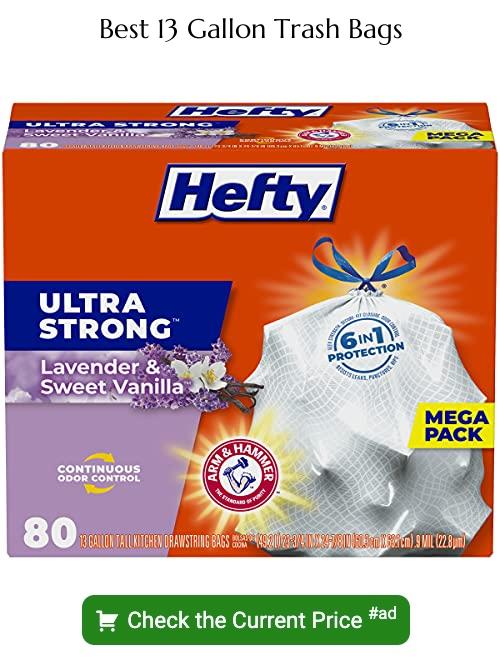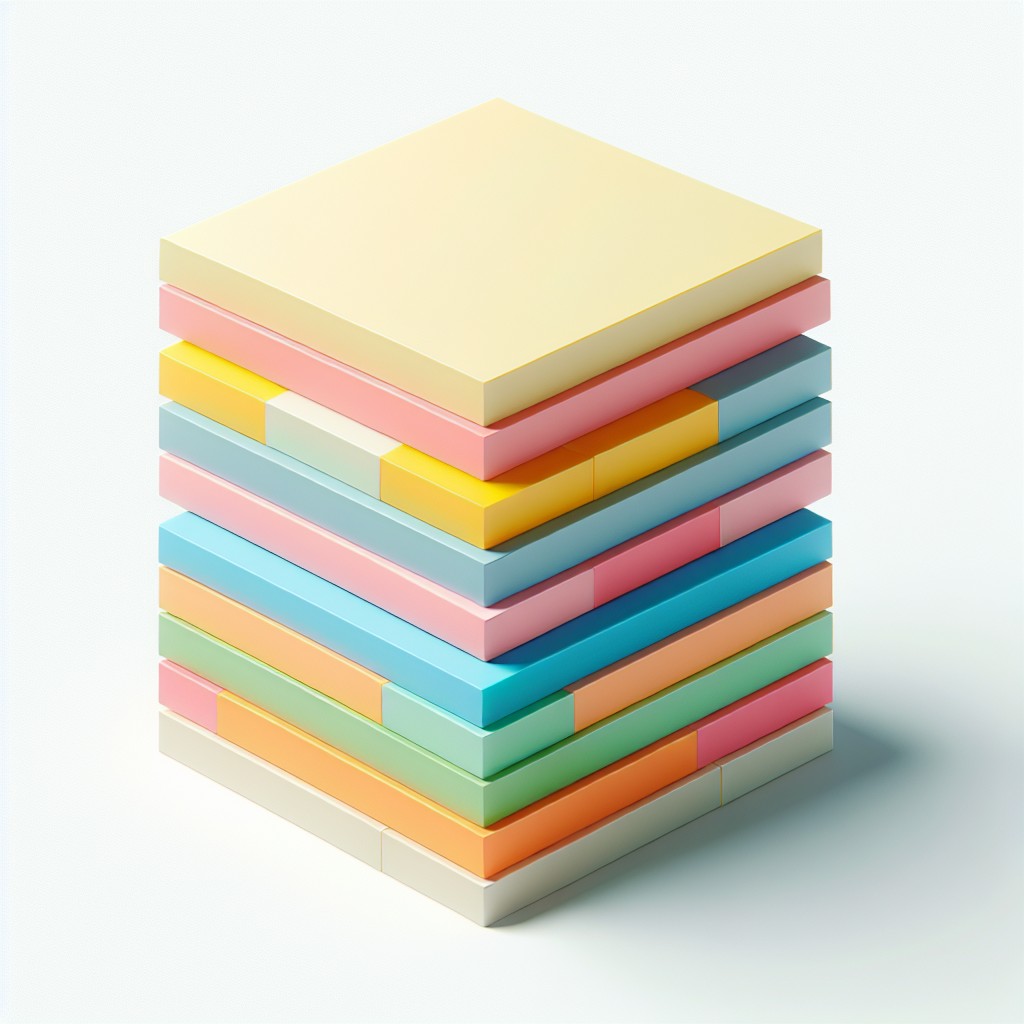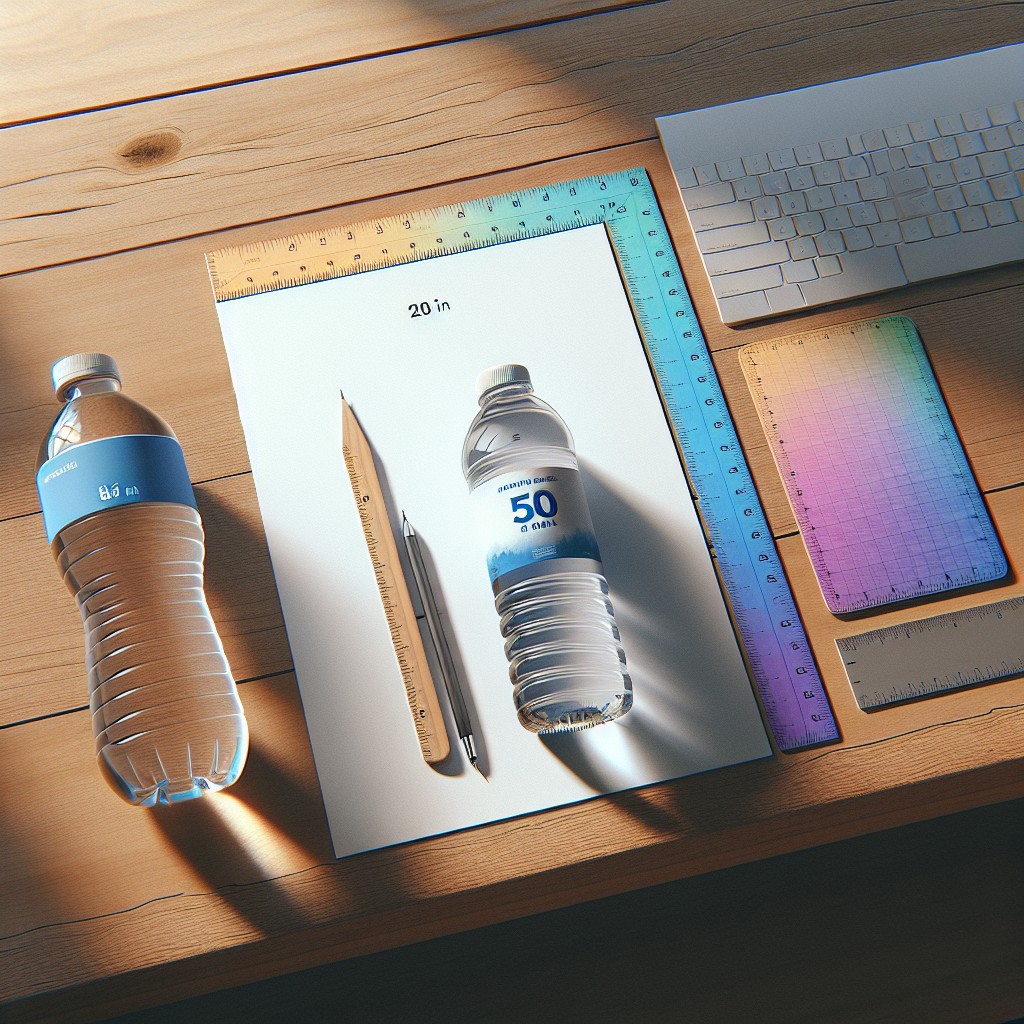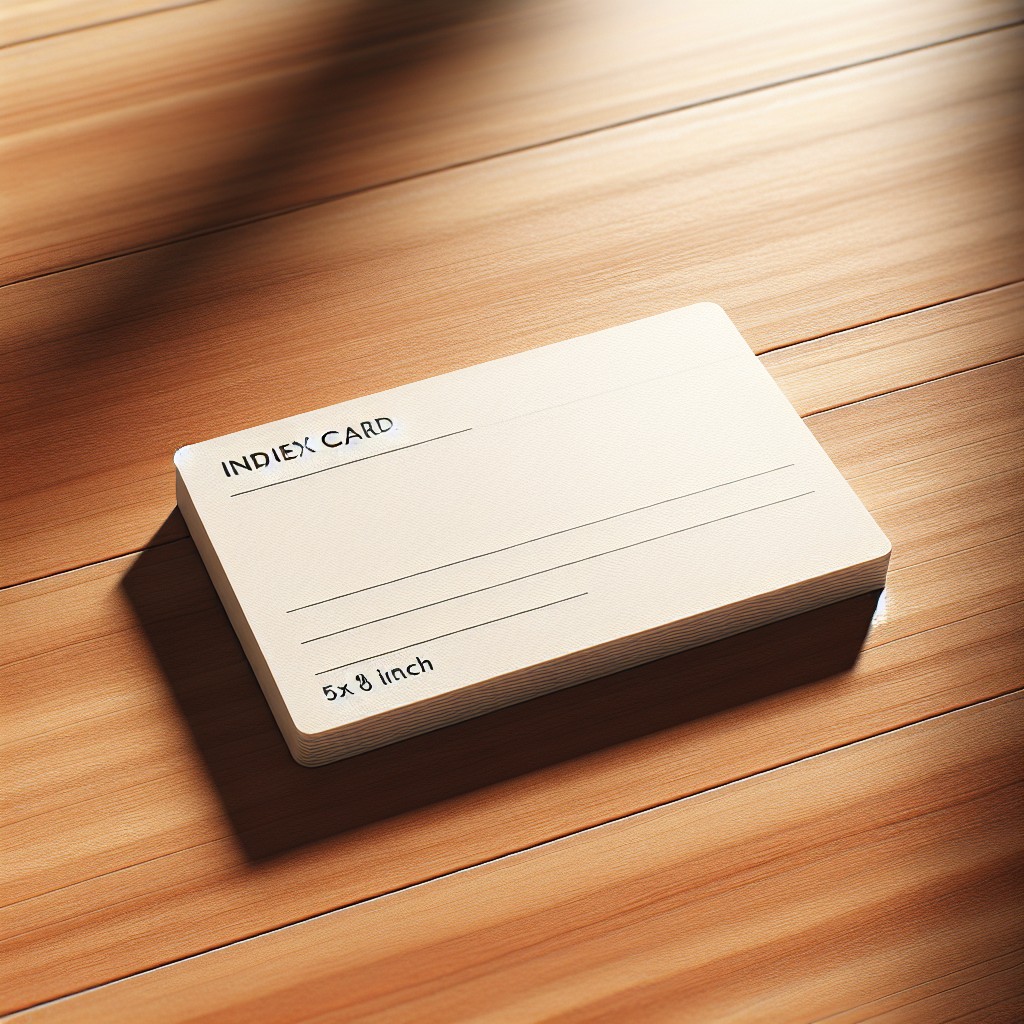Last updated on
In this comparison between ten-gallon and thirteen-gallon trash cans, you’ll be surprised because the differences can significantly influence your everyday convenience and housekeeping routine.
Key takeaways:
- 13 gallon can holds 30% more waste than 10 gallon
- 10 gallon can is suitable for smaller households
- 13 gallon can works for families or busier kitchens
- Correct bag size is important for a flush fit
- Consider household size and waste output when choosing size
What's Inside
Capacity Comparison: 10 Gallon Versus 13 Gallon
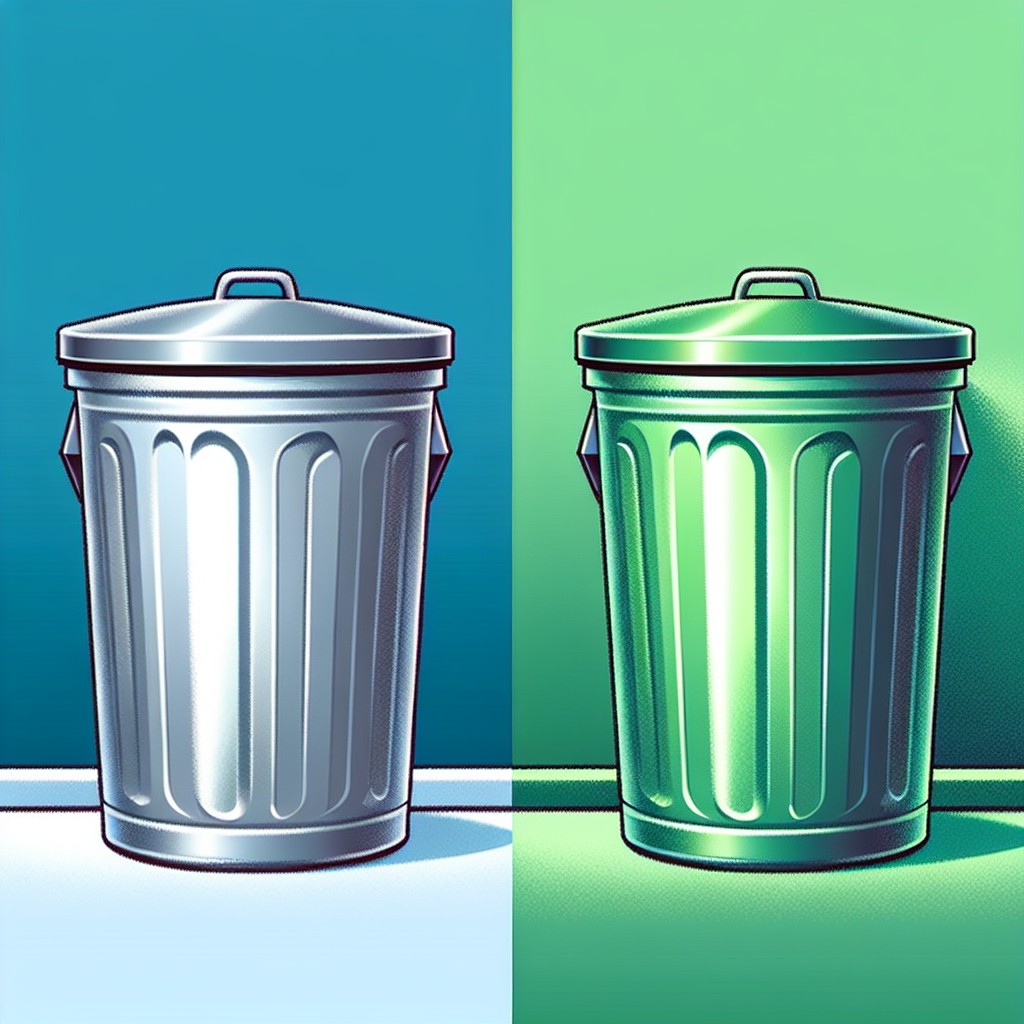
When it comes to capacity, the difference between a 10 gallon and a 13 gallon trash can may seem marginal, but it’s significant in practical terms.
A 13 gallon can holds 30% more waste than its 10 gallon counterpart.
This means if you typically generate a large amount of trash daily, a 13 gallon bin could save you from the need to take out the trash as frequently.
Conversely, a 10 gallon can is a smart choice for smaller households or spaces that generate less waste, ensuring that the trash doesn’t sit long enough to create odors.
It’s all about assessing your typical trash output and choosing the size that aligns with your disposal needs.
Space Requirements for 10 and 13 Gallon Trash Cans
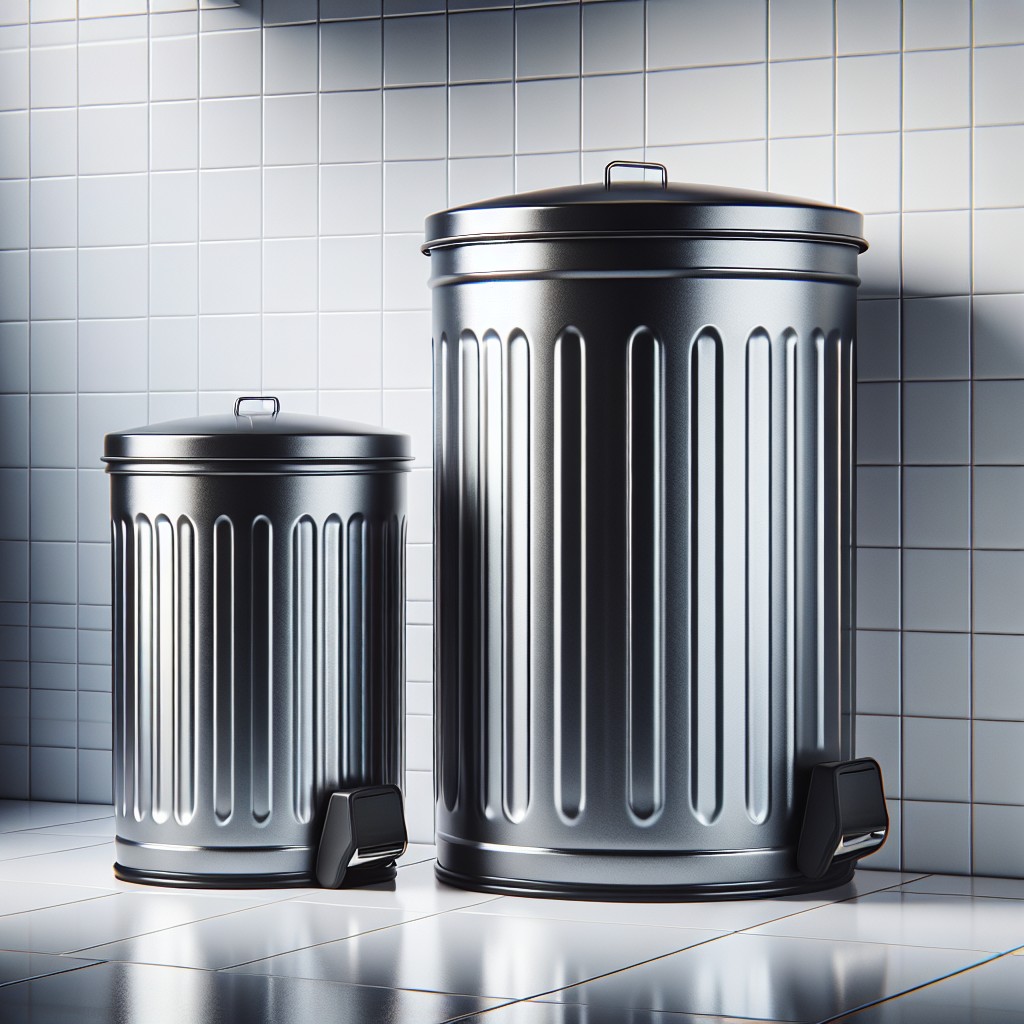
Selecting the right size trash can is as much about capacity as it is about the can’s physical footprint. For smaller kitchens, home offices, or bathrooms, a 10 gallon might be the perfect fit, tucking neatly under a desk or within a narrow space. While it’s compact, it should still be easy to access and operate – think of areas with limited floor space where a smaller bin won’t obstruct pathways or cabinet doors.
In contrast, the 13 gallon option is slightly bulkier. It’s a common choice for the kitchen, where you might need a bit more volume to handle daily throwaways from meal prep and clean-up. Before deciding, measure the space where you plan to place the bin. Ensure there’s enough room to operate any lids or foot pedals without bumping into surroundings. Remember to consider the height as well – a taller bin might conflict with lower countertops or shelves.
Trash Bag Compatibility: 10 Gallon and 13 Gallon Liners
Ensuring you have the correct size trash bag for your can prevents overhang or an annoyingly snug fit. Typically, 10-gallon cans pair with bags labeled 24″ x 24″ or similar, ensuring a flush fit without excess material.
For 13-gallon cans, look for bags around 24″ x 31″ to accommodate the extra volume without spillage. While using a larger bag for a smaller can seems practical, it can lead to unnecessary plastic waste and additional costs.
Conversely, a bag too small may tear or not adequately cover the can’s sides, leading to potential messes. It’s advisable to check the manufacturer’s recommendations for the perfect match, streamlining your routine and ensuring a tidy bin experience every time.
Frequency of Trash Disposal: 10 Vs 13 Gallon
Opting for a 10 gallon trash can is suitable for single or two-person households where the waste generation is low, leading to less frequent trips to the dumpster—typically, this translates to taking out the trash every 3-4 days.
Conversely, a 13 gallon option is a better fit for families or busier kitchens, accommodating more waste and potentially reducing the disposal frequency to once every 2-3 days.
The less frequent disposal of a 13 gallon can might also appeal to those with limited mobility or desiring fewer chores. However, remember that a can filled over several days may develop unpleasant odors if not managed properly.
It’s important to weigh your household’s trash output against these factors to maintain a balanced and efficient waste routine.
Suitable Environments: Where to Use 10 or 13 Gallon Bins
Selecting the right size trash can is essential for the space it will inhabit. A 10-gallon bin is compact, making it a perfect fit for smaller kitchens, bathrooms, or home offices where floor space is at a premium. It’s also suitable for spaces with less foot traffic or fewer occupants, such as a home office for a remote worker.
On the other hand, a 13-gallon trash can is the standard size for kitchen use in many households. It accommodates more waste, aligning well with the needs of a medium-sized family or shared living spaces like a residential communal area or a break room in a small office. Its larger capacity reduces the need for frequent emptying, a plus for busy environments.
For public areas, such as lobbies or larger office spaces, a 13-gallon option typically proves more practical. It handles higher waste disposal needs and minimizes maintenance. However, in areas with limited square footage or in environments looking to encourage less waste production, a 10-gallon might be the conscious choice.
In summary, consider the volume of trash typically accumulated, the frequency of disposal you prefer, and the physical space available when choosing between 10 and 13 gallon trash cans for various environments.
Cost Implications
When exploring the price of these trash cans, the 13-gallon often comes with a slightly higher price tag due to the increased material used in its design. However, the cost difference is typically minimal and may vary depending on the brand, material, and features like foot pedals or sensor lids.
Investing in the larger bin could mean savings over time. As larger bags tend to be more cost-effective per gallon than smaller bags, you’ll get more for your money. But, don’t overlook the potential increase in waste; a bigger can might encourage more trash, rather than promoting waste reduction.
Consider durability and design as well. A sturdier, more expensive trash can might last longer and provide better odor control than a cheaper version. This can save money and provide a better long-term waste solution for your space.
Footprint: Assessing the Physical Size
When considering a trash can for your space, it’s essential to measure the intended area. A 10 gallon can might fit snugly under a desk or in a bathroom, occupying a smaller footprint. On the other hand, a 13 gallon option is slightly larger, typically seen in kitchens, and might require more floor space. Always check dimensions before your purchase to ensure a good fit; remember that lids and potential mechanisms can add to the overall size. Visualize how the trash can will open – whether it’s a swing-top, step-on, or touch-bar operation – and account for this in the allocated space.
Lastly, consider the clearance for removing a full bag without snagging; ample space avoids spills and tears.
Efficiency for Single, Couples, or Family Households
Choosing the right trash can size largely hinges on the household composition. Here’s how efficiency might vary:
- Singles: A 10 gallon can likely suffices, saving space and reducing the odor from less frequent trash generation.
- Couples: Depending on lifestyle, a 13 gallon might be more practical, accommodating more waste without daily emptying.
- Families: A 13 gallon bin is often the minimum, meeting the higher waste output, and minimizing the need for constant disposal.
Larger households might even consider multiple bins or a larger capacity to streamline waste management. Remember, efficiency isn’t just about volume; it’s about matching your bin to your specific waste disposal needs.
Waste Segregation: Pairing With Recycling or Compost Bins
Incorporating a recycling or compost bin alongside your regular trash can is a great stride toward environmental responsibility. Opting for a 10 gallon trash can might encourage more frequent sorting, as the smaller size fills up quickly, nudging you to segregate recyclables and compostables promptly.
On the flip side, a 13 gallon bin allows more room for waste, which might seem convenient but can potentially lead to less disciplined recycling habits if not managed carefully. When considering which size suits your waste segregation routine, reflect on your household waste composition and your commitment to recycling.
Do you generate a significant amount of recyclable material daily? A larger bin could accommodate this without the need for constant emptying. Is your goal to reduce landfill waste? A smaller trash can, flanked by proportionate recycling and compost options, might serve as a constant reminder to sort waste diligently. Remember, the key lies in creating a system that works seamlessly for your lifestyle, ensuring sustainability is as convenient as it is conscientious.
User Reviews and Recommendations
When diving into user reviews, the praise for a 13 gallon is often centered on its capacity to handle a week’s worth of waste for a family of four, reducing the hassle of frequent trips to the dumpster. On the other hand, individuals living in smaller spaces tend to recommend the 10 gallon for its more compact footprint and its sufficiency for their more limited waste production.
Reviewers commonly mention convenience features like foot pedals for hands-free operation and lid seals that contain odors, which are available in both sizes but might influence a buyer’s choice based on personal lifestyle. A noteworthy trend is the emphasis on durability and design, with stainless steel cans receiving particular acclaim for blending functionality with aesthetics.
Feedback also frequently highlights the environmental aspect, with eco-conscious consumers pointing out that a smaller can encourages less waste and is more suitable if paired with a committed recycling regime. Lastly, users with limited mobility appreciate the lighter lift when changing bags in a 10 gallon, a detail worth considering for those with similar needs.
FAQ
Is a 10 gallon trash can big enough?
A 10-gallon trash can is sufficient for empty nesters or young couples but a family of four might need a bigger size, between 12 to 16 gallons, to minimize the frequency of trash disposal.
What are 13 gallon trash bags used for?
13 gallon trash bags are used to line tall kitchen waste containers, litters, and commercial bins for efficient waste management.
What is the normal size kitchen trash can?
The standard size for a kitchen trash can typically ranges between 12 and 16 gallons (45 to 60 liters), and larger families or commercial kitchens may require a larger size, up to 20 gallons (75 liters).
How does a 10 gallon trash can physically compare in size to a 13 gallon can?
A 13-gallon trash can is larger than a 10-gallon trash can, often noticeable in both the height and diameter, but the exact dimensions can vary depending on the specific style and design of the can.
Are there unique advantages to choosing a 13 gallon trash can over a 10 gallon?
Yes, a 13-gallon trash can can hold more waste, reduce the frequency of bag changes and might be more compatible with standard kitchen trash bags.
What factors should one consider when choosing between a 10 and 13 gallon trash can for their home?
When choosing between a 10 and 13 gallon trash can for your home, consider factors such as the size of your household, the amount of waste produced, the available space for the trash can, and the frequency of trash pickup.
